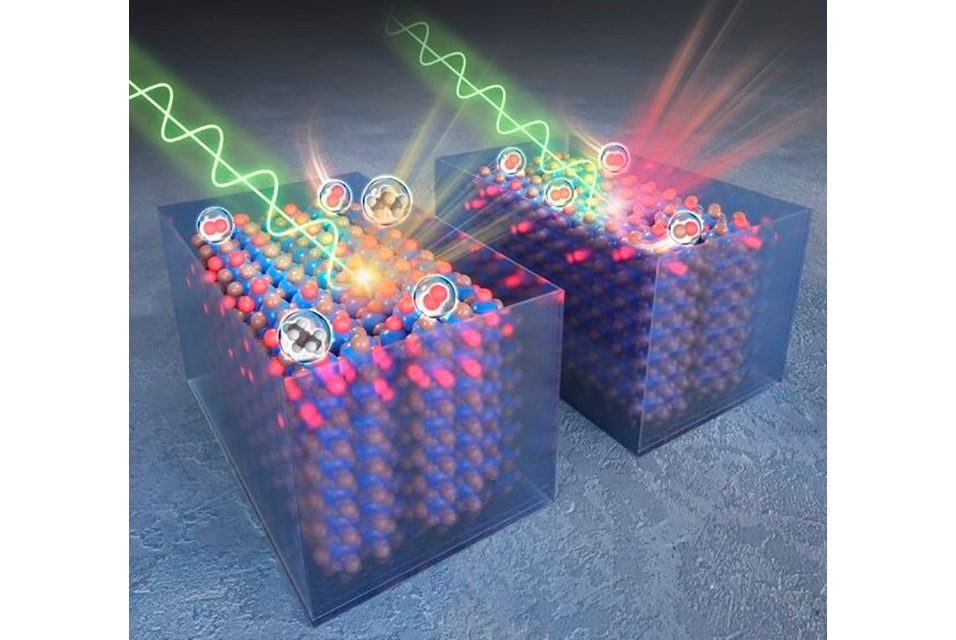BERLIN.- The experimental elucidation of the structures at the interface between a working catalyst and the reacting molecules is the key to a fundamental understanding of heterogeneous catalysis. Researchers from the
Fritz Haber Institute of the Max Planck Society have reassigned the vibrational spectrum of vanadium pentoxide, an important catalyst for the synthesis of valuable products through the reaction of organic molecules with gas-phase oxygen, and have thus been able to elucidate which centers are involved in the activation of the oxygen molecule and the oxidation of hydrocarbons.
In the crystal structure of vanadium pentoxide, three different types of oxygen atoms are distinguished by how they link neighboring vanadium atoms. The vibrational spectra of the oxide measured by Raman spectroscopy differ when the oxygen atoms with the regular atomic mass 16 are exchanged for the heavier oxygen isotope with mass 18. The researchers have now simulated the Raman spectra for the cases where either only one of the three positions in the solid or all three are occupied by a heavier oxygen atom. By comparing calculated spectra with spectra measured in the presence of isotopically labeled oxygen, the team of the Fitz Haber Institute showed which of the three different oxygen atoms in the lattice of the catalyst reacts with the gas phase.
Due to the well-defined structure of the solid and the fact that the investigations were carried out under realistic catalysis conditions, experimentally verified conclusions about the influence of the reaction conditions in the oxidation of propane on the structure of the working catalyst were possible. The type of the oxygen atom and whether only the surface or also centers in deeper layers of the solid are involved in the reaction depends on the temperature and the chemical composition of the gas phase. This information is important because different oxygen species direct the surface reaction either towards valuable oxidation products or towards a total combustion of the hydrocarbon to carbon dioxide. It was found that only at very high temperatures and under strongly reducing conditions are oxygen atoms in the lattice of the catalyst exchanged for oxygen atoms from the gas phase. Under conditions where the catalyst produces high-value reaction products like propylene or oxygenates, this is hardly the case and measurable only after long times in operation. This means that established mechanistic and design concepts in oxidation catalysis have to be reconsidered in order to achieve a sustainable use of raw materials by avoiding their total combustion to carbon dioxide.
The research was published in The Journal of Physical Chemistry C.









